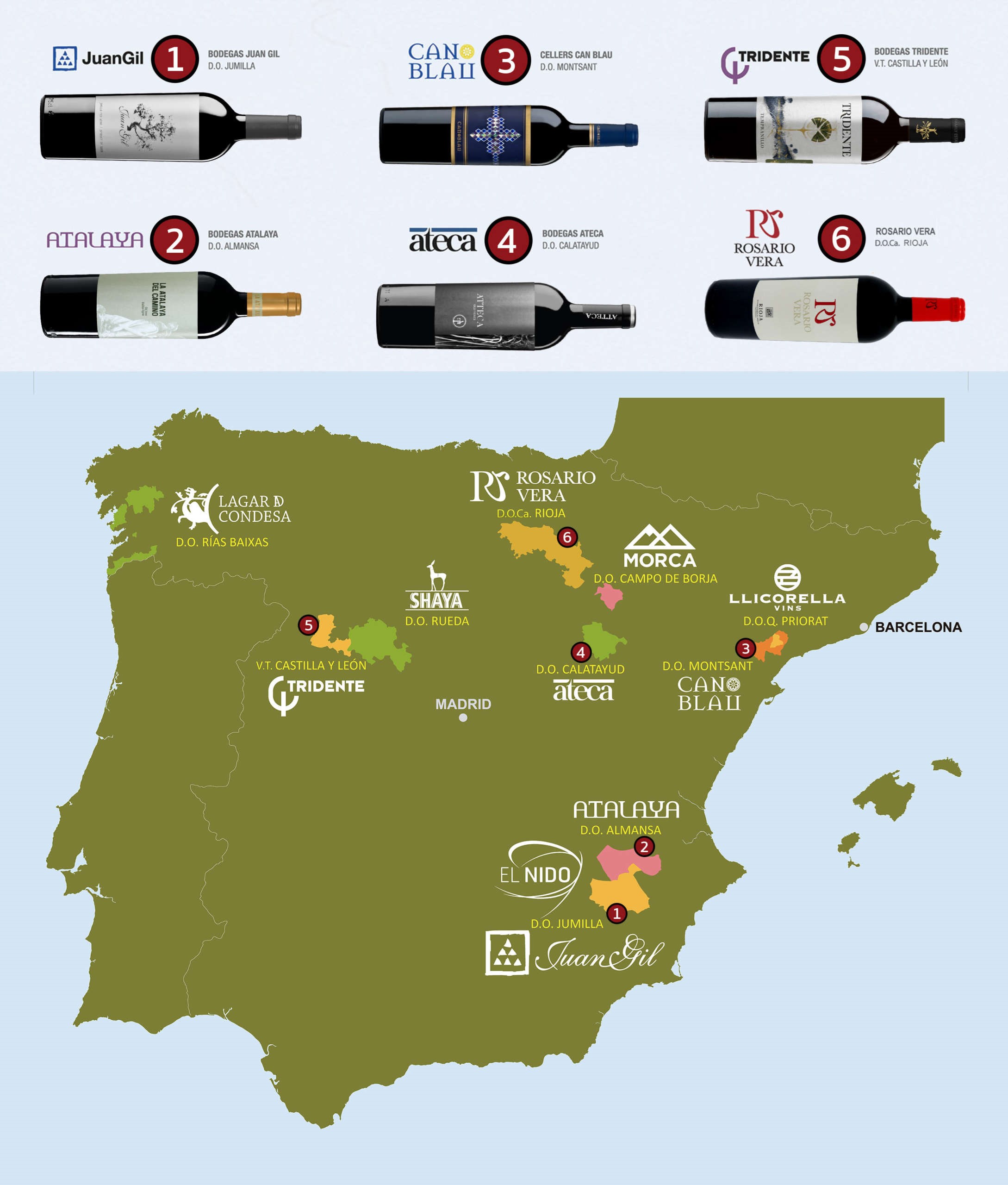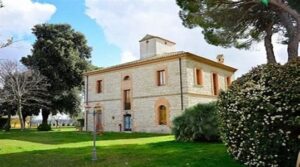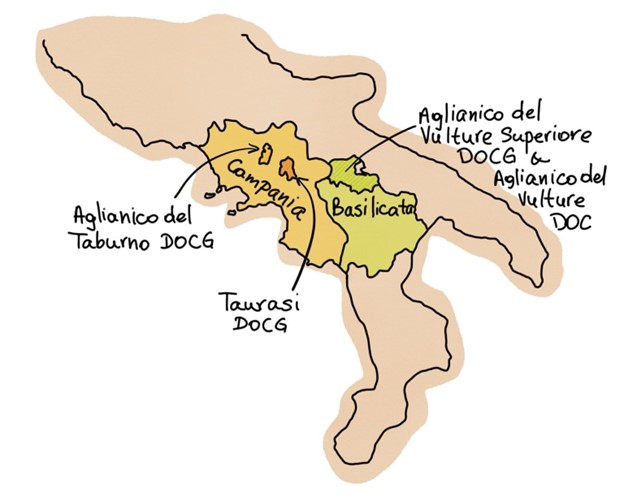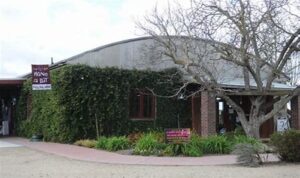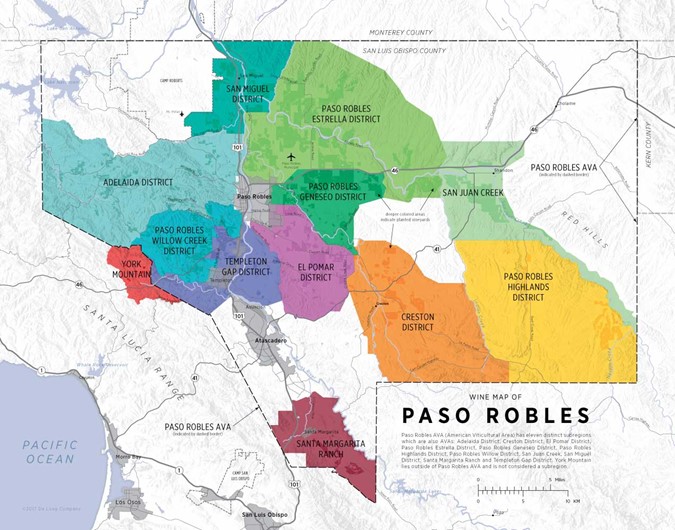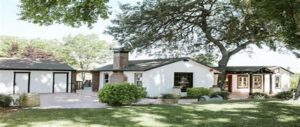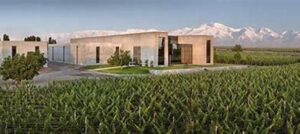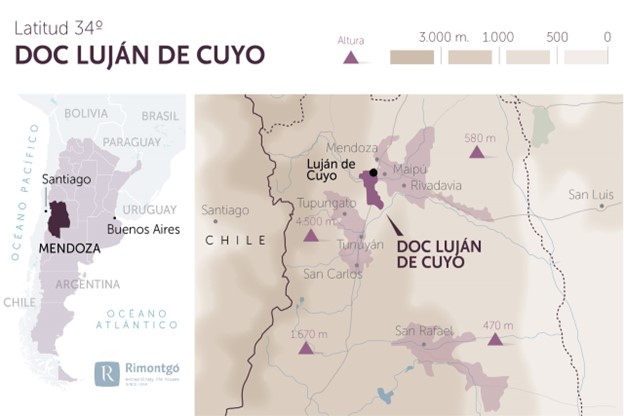Holiday Market Wine
THE GOLD CLUB RED ONLY
MARCH 2023 WINES
-
ROBERT HALL WINERY PASO
-
ALTANZA GRAN RESERVA RIOJA
-
MARCHESI INCISA DELLA ROCCHETTA BARBERA d’ASTI
-
CALDERA FABRIZIA XENIO RUCHé
-
BODEGAS BORSAO CABRIOLA
-
MAISON NOIR IN SHEEP’S CLOTHING CABERNET SAUVIGNON

Robert Hall Winery Paso Red
2019 | $17.99
DESCRIPTION
Robert Hall wines are a tribute to hard work and pride in craft. Their award-winning wines represent the pillar of the vibrant and premier Paso Robles winemaking region and express the spirit of the valley. Their estate-grown varieties have big, bold characteristics and the wines are crafted with rich, complex flavors.
A self-made man from working-class St. Paul, Minnesota, Robert Hall never shied away from a challenge, opening and growing a broad range of innovative businesses throughout his life. Robert Hall Winery, founded in 1999 by the late entrepreneur Robert Hall, showcases the best Paso Robles has to offer. The winery has three estate vineyards in the Geneseo and Estrella Districts, totaling 136 planted acres of fruit. A small-business visionary, Robert had a life-long passion for wine and the winery lifestyle. He viewed all his business success as a well-earned opportunity to venture west in search of the perfect landscape, and the perfect partner to help him realize his true dream.
He found a partner in acclaimed winemaker Don Brady. Brady has been the creative force behind the award-winning wines since the beginning. Through his hands-on approach, Brady has been pivotal in bringing acclaim to Paso Robles wines, and instrumental to elevating the valley’s status as the premier winemaking region. He helped establish the region as a distinct AVA (American Viniculture Area) in 1983 & create the unique style the region is renowned for, and make it a favorite of wine lovers around the globe. Since then, their wines have earned countless awards and global recognition. They continue to inspire.
TASTING NOTES
NOSE: aromas of berry cobbler, and savory herbs, and tobacco.
PALATE: full-bodied with fine grained tannins on the mid-palate and a long finish.
PAIRING: smoked meats, burgers, Spanish style tapas.
FUN FACTS: Straight-up aromas of rock and dirt meet with wild herbs and tar on the very earthy and savory nose of this bottling. A firm tension frames the sip, where a dark plum flavor is the star, with hints of earth and chalk also arising.
Wine Enthusiast ~ Matt Kettmann
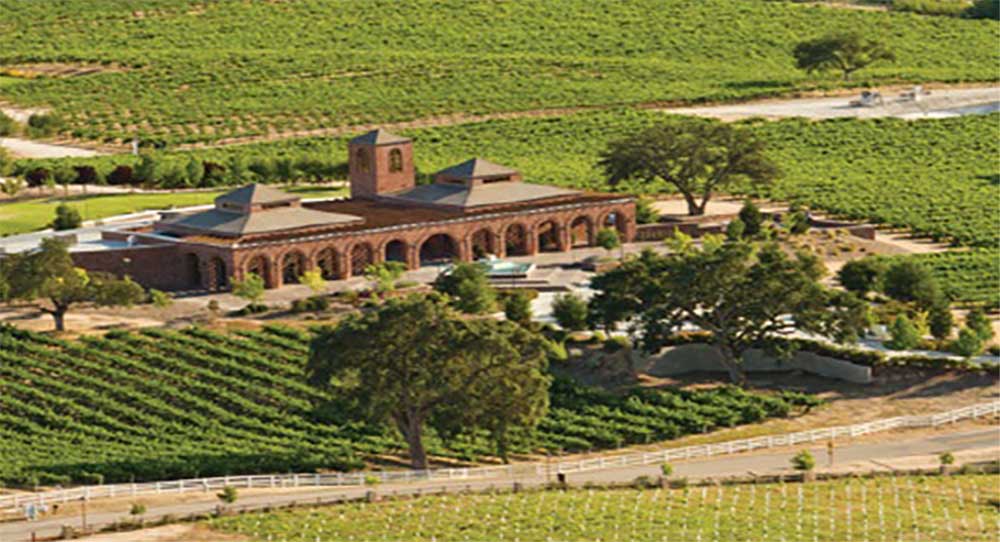
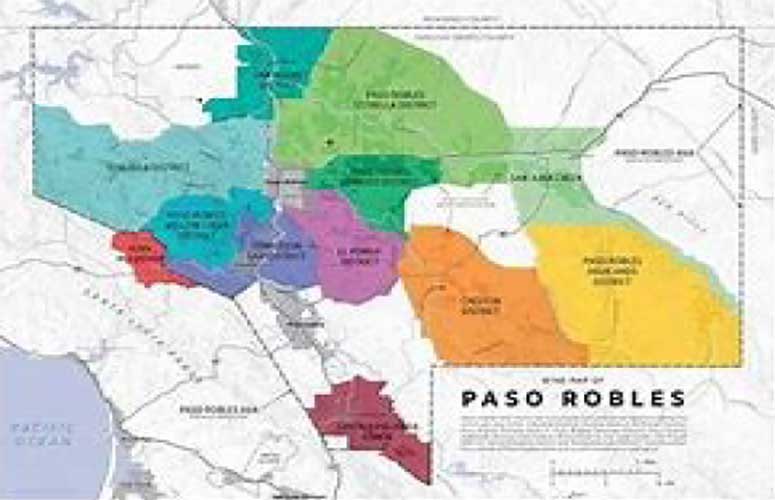

ALTANZA GRAN RESERVA RIOJA
2011 | $30.99
DESCRIPTION
Altanza winery is in the most prestigious region of Rioja, Rioja Alta. The winery cultivates just two grape varieties sauvignon blanc and tempranillo and practices organic farming methods.
Altanza was founded by a group of friends who shared the dream of making classic timeless Riojas, with a modern touch and a lot of authenticity. They built a state of the art winery based on 3 pillars: their own Estate vineyard, Tempranillo grapes and French oak.
Altanza Gran Reserva Rioja 2011
This robust red is 100% tempranillo grape and 2011 is the current vintage release. How is this the current vintage? In Spain, and all wine making countries, there are rules that must be followed. There are controlling organizations that dictate what grapes can be grown, what grapes can be blended, the percentage of grapes used, how long or short a wine needs to be aged and other directives. These organizations are in place to guaranty authenticity, standards, and quality in wine making. These are the levels of aging in Spain and what is required:
Crianza- Think about Crianza as being the first tier of a “Reserve” wine. Spanish law requires that for a red wine to be labeled as a Crianza, it must be aged for two years, with a minimum of one year in an oak barrel and for another year in the bottle before it’s sold.
Reserva- Aged for at least three years in the cask and bottle, at least one of which must have been in the cask.
Gran Reserva- To be labeled as a Gran Reserva, the law requires that it be aged for a minimum of 5 years, with two of those years being within an oak cask or barrel.
TASTING NOTES
NOSE: Rioja wines will have different aromas depending on their aging classification. In this case, fruit notes dissipate and secondary notes like earth, leather, tobacco, cocoa, licorice, coffee, and herb are more prominent.
PALATE: Full-bodied and well balanced with flavors of vanilla, berry jam, chocolate, and savory herb notes. Balanced and elegant with structured velvety tannins and a long finish. Drink now through 2028.
PAIRING: Ideal with red meats, roasts, game, stews, and aged cheeses.
FUN FACTS: Decanter Magazine Word Wine Awards ~ 92 Points
Wine Enthusiast Magazine ~ 90 Points
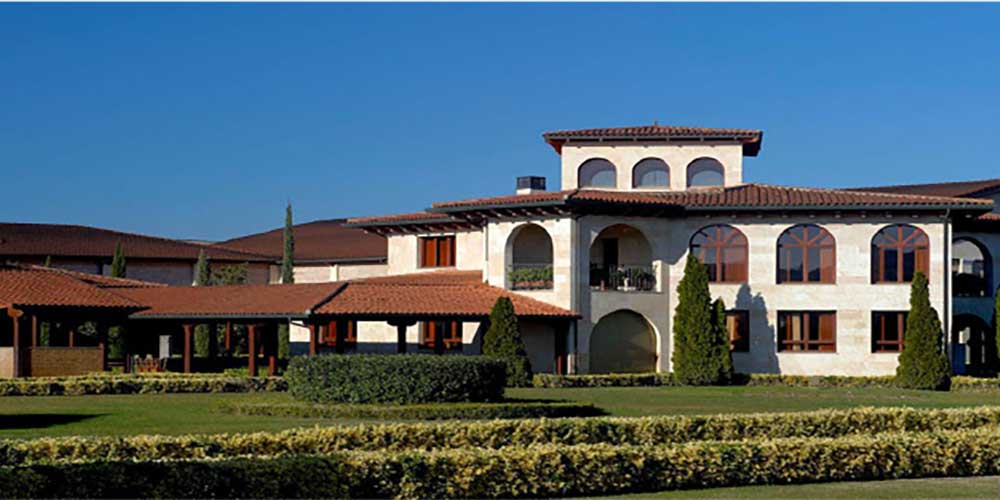
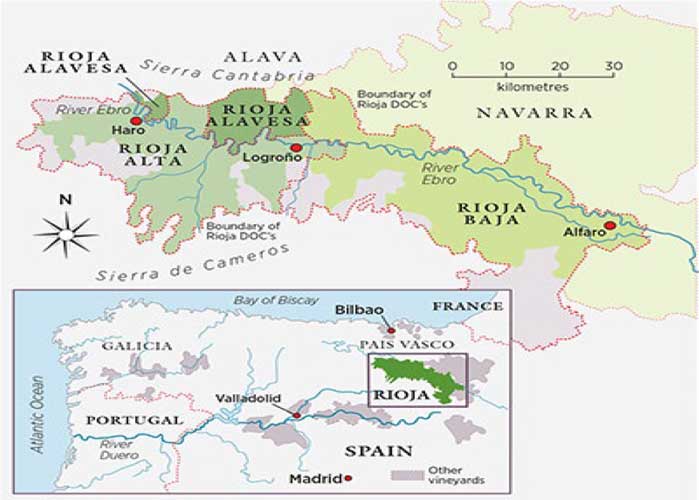

MARCHESI INCISA DELLA ROCCHETTA BARBERA d’ASTI
2017 | $29.99
DESCRIPTION
The Marchesi Incisa della Rocchetta is one of the historic Piedmontese families who have lived in Monferrato for more than a thousand years and since 1400 in the village of Rocchetta Tanaro. Centuries of dedication and passion in the world of wine with the Marchese Leopoldo who introduces Pinot Noir to the hills, the Marchese Mario who moves to Bolgheri and creates the legendary Sassicaia, the Marchesa Barbara who renovates the marvelous winery in the center of the town. Today the new generation, with Filiberto and Francesca, carries on the family legacy and the prestige of the company.
Sant’Emiliano is a cru of Rocchetta Tanaro, a hill and a vineyard well known for its ideal south-facing exposition. It is 2.5 hectares in size, the vineyard site’s soil is a mix of sand and clay, originally a prehistoric seabed rich in minerals. The vines are an average age of 50 years old. Great care is taken during the harvest to select only the best and perfectly matured fruits.
Marchesi Incisa della Rocchetta Barbera d’Asti 2017
Unlike many of the other red grapes in the Piedmont region in Northern Italy. The grape accounts for around 55% of the wine produced in this region. A tough, non-fussy grape, Barbera has been known to be flexible in its acclimation to different regions. It is typically a deep ruby color with low tannin and high acidity. Unlike many of the other red grapes in the Piedmont, Barbera has a relatively long hang time on the vine and that imparts a lot of rich, dense flavors to the wine.
Sant ’Emiliano is their interpretation of Barbera in which the use of barriques contributes to adding complexity and structure to the wine that most represents the territory of the Monferrato. Sant ‘Emiliano is a wine of great elegance and balance, produced with an extraordinary attention to quality, both in the vineyard and in the cellar.
TASTING NOTES
NOSE: Scents of dark fruit, flowers, and spice.
PALATE: This wine is complex. It displays notes of violet, plum and dark cherry when young. With ageing in the bottle, it develops notes of tobacco, chocolate, leather, and licorice. This wine is well-balanced with an exceptionally long and elegant finish.
PAIRING: Barbera wine is an excellent choice for pairing with food, thanks to its versatile flavor profile and medium body. The wine pairs well with a variety of dishes, including pasta dishes with red sauce, pizza, grilled meats, chicken, and fish.
FUN FACTS: Aromas of blue flowers, underbrush, ripe plum and exotic spice shape the nose. Despite its bold structure and muscle on the palate, it shows surprising finesse in flavors of fleshy blackberry, brandied cherry, star anise and tobacco framed in velvety tannins. Thanks to the succulent fruit, you barely notice the warmth of alcohol on the close.
Wine Enthusiast ~ 90 Points
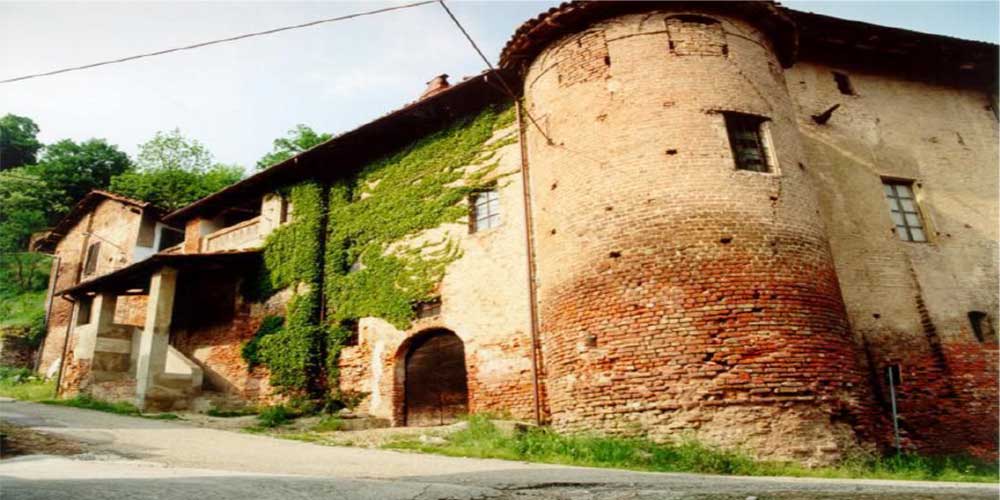


CALDERA FABRIZIA XENIO RUCHé
2018 | $18.99
DESCRIPTION
The Caldera winery is a historical presence, deeply rooted in the territory. The bottle label is a tribute and the result of a genealogical and heraldic research. In fact, the presence of the Caldera family in the territory of Pisa has already been verified to from around the 12th century.
The winery owes thanks to the far-sighted vision of Prospero Caldera. He decided in the early twentieth century to build it in a strategic position, that is, near the Portacomaro railway station – almost as if he wanted to trace the destiny of a winery with an international vocation. A choice, which today seems difficult to understand but, at the time, changed the fortunes of the family. The station, and consequently the railway, was in fact the only method to transport wine abroad.
Today there is Fabrizia who, together with her husband Roberto Rossi and son Fabio, leads the winery towards a modern and technological evolution for an increasingly attentive and demanding public.
The Caldera winery has always been open to the world and has always made far-sighted and avant-garde decisions. In fact, Fabrizia Caldera’s choices continue in the same direction as the first founder Prospero.
From the Monferrato hills, the winery project began in the last century. This is strongly oriented on bio-sustainable themes, respectful and attentive to the ancestral and anachronistic pact between man and earth. According to the family, the generosity of Mother Nature and her gifts is amply rewarded by carrying out ecological, sustainable and green choices.
Caldera Fabrizia Xenio Ruché 2018
This wine is 100% Ruché (ROO-kay) grapes from the Castagnole Monferrato region. The average vine age is 20 years old. It is vinified in a traditional method with controlled maceration, pumping over of the fermenting must and punching down of the cap during fermentation. When it is consumed young it has more fruity and floral notes, with aging it becomes more austere and complex.
TASTING NOTES
NOSE: Aromas of roses and violets mingled with spice notes.
PALATE: Dry, balanced, and velvety with notes of blackberry, raspberry, and ripe plums, and hints of spice.
PAIRING: This wine pairs well with salami, ham, game, blue cheeses, and dark chocolate. Also, it’s a great companion with oriental cuisine and piquant dishes.



BODEGAS BORSAO CABRIOLA
2017 | $18.99
DESCRIPTION
The first written records about winemaking in the region date back to 1203 and were found in the Monastery of Veruela. The monks had an essential role in the development of vine growing and winemaking in the region.
Bodegas Borsao origins go back to 1958, the year the Cooperative of Borja was founded. This is where Borsao originated as a brand. Some years later, the co-operatives of Pozuelo and Tabuenca joined Borja, adding their resources and –most importantly- their vineyards. It happened in the year 2001, and the new company was called Bodegas Borsao S.A., established as a limited company. Its 700 members became shareholders and a management team was appointed to shake the foundations of the winery: starting with the grape sourcing scheme and following with a refurbishment of the winemaking facilities. Nowadays there has been more professionalization and now they are 375 winegrowers.
Experience, resources and means combined with the potential of the vineyards of the 3 wine cellars, enabling the development of a new work philosophy that has given Borsao international recognition and prestige.
“We will continue working on our vineyards, using the indigenous clone of Garnacha of Aragón, studying our microclimates and learning about the potential of the different sites.”
-Bodegas Borsao
Bodegas Borsao Cabriola 2017
The wine is a blend of 55% Garnacha, 39% Syrah, and 6% Mazuela. What is Mazuela? Good Question. It is a red grape with fruity flavors of mixed black fruits with notes of pepper, licorice, and spicy accents, and it possesses high tannins and acid. It is used as a blending grape and is known by many names, for instance, Carignan Noir is one example. Borsao Cabriola comes from old vines aged between 20 and 60 years old that grow under the influence of the Moncayo Massif Mountain chain and are traditionally cultivated. The harvest is carried out manually when the grapes reach optimum ripeness. These three grapes are fermented separately in stainless-steel tanks at controlled temperatures. Afterward, the wine is aged for twelve months in French and American oak barrels.
TASTING NOTES
NOSE: Aromas of vanilla with intense fruity tones.
PALATE: It has a long and pleasant very harmonic aftertaste, structured and round.
PAIRING: Pork, lamb, beef, braised meat dishes, duck, wild game, stews, and grilled meats.
FUN FACTS: "A full-bodied and round-textured red with cherries and blackberries and some walnut and dried-herb undertones. Medium body, lightly chewy tannins and a fruity finish."
-James Suckling ~ 91 Points
Cabriola is a specific jumping maneuver that a horse is trained to perform after years of exacting dressage. The movement requires great technique and precision from the rider and a horse working as a team. Much like the relationship between our winemaker and vineyards, combining masterful techniques.

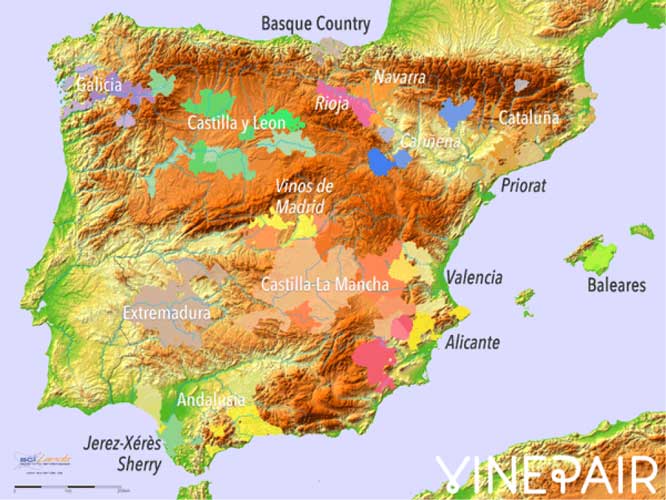

MAISON NOIR IN SHEEP’S CLOTHING CABERNET SAUVIGNON
2020 | $18.99
DESCRIPTION
André Hueston Mack was raised in Trenton, New Jersey, and eventually made his way into the world of finance at Citicorp, but he was not satisfied. “I became really immersed in wine and started studying and kind of worked very hard toward the title of being a sommelier,” said Mack. He said his love of wine was originally ignited by the TV sitcom “Frasier” and the character’s knowledge and appreciation of fine wine.
Mack was named Best Young Sommelier in America by the well-known Chaine des Rotisseurs in 2003. He was the first African-American ever to win the title working in New York. After being named Best Young Sommelier, Mack received the opportunity to work as a sommelier at Thomas Keller’s world-renowned “The French Laundry” in Yountville, California. He then proceeded to accept the position of Head Sommelier at Keller’s equally famed “Per Se” in New York City.
“And you know, just to have the audacity to quit one of the top five jobs in the world as a sommelier to say that I’m going to hop on the other side and start making wine — you know, a lot of people weren’t doing that,” said Mack.
Mack, who does not own a winery or vineyards, acts as a negotiator who purchases grapes and then works with a custom winemaking facility in Oregon. Maison Noir is a two-fold lifestyle project producing both a T-Shirt line and a wine brand. Mack founded the brand in 2007, both ends of Maison Noir incorporate a trademark attitude and personal perspective on wine subculture. The wines are unique and distinctive garage wines, initially created for some of the New York's best restaurants for whom Mack was a sommelier and now available nationwide. Mack’s wines — and shrewd use of social media — have drawn the attention of sports teams and major corporations including Cadillac and Microsoft. He’s an author and a self-taught graphic designer who started a streetwear company even before the debut of his wines. Mack owns a wine shop, a ham and charcuterie bar and a bakery — all near his home in Brooklyn.
“I grew up on hip hop, skateboarding, punk rock and being able to put all those things — infuse them together — you know, makes it very enjoyable for me,” said Mack.
Several African Americans have made their way to the top of the wine-making world, including a New Yorker, Mack, who has established perhaps the largest.
Maison Noir In Sheep’s Clothing Cabernet Sauvignon 2020
His wines are produced in Oregon’s Willamette Valley and Columbia Valley in Washington State — areas regarded as America’s premier wine-making regions. The fruit for this wine comes from Columbia Valley - 60% from the Red Mountain AVA and 40% from the Wahluke Slope AVA. It is 100% cabernet sauvignon. After fermentation the wine spends 10 months aging in barrel, 25% of which is new French oak. Only 2,500 cases are produced each year.
TASTING NOTES
NOSE: In Sheep's Clothing delivers a ripeness of fruit flavors while preserving the acidity that gives the medium to full-bodied wine a sense of freshness. It possesses layers of cassis, blueberries, and black cherries.
PALATE: This wine lends to a New World style of fruit with more of an Old World structure with a hint of wood smoke. It fully embraces an integral part of classic Cabernet sauvignon by highlighting a complex blend of dried herbs: anise, thyme, and bay leaf.
PAIRING: The key to Cabernet Sauvignon food pairing is to consider the tannins. Tannins need protein to break down. Cabernet has high tannins and pair best with meats that are not super lean and are protein rich. Examples: beef, game, and lamb. Cheeses: aged cheddar (fun tip, aged cheddar with aged Cab, fresh cheddar with young Cab), gouda, blue cheese and gruyere.
FUN FACTS: The name is a hat tip to Alonzo Harris in the movie Training Day: "to protect the sheep you gotta catch the wolf, and it takes a wolf to catch a wolf."
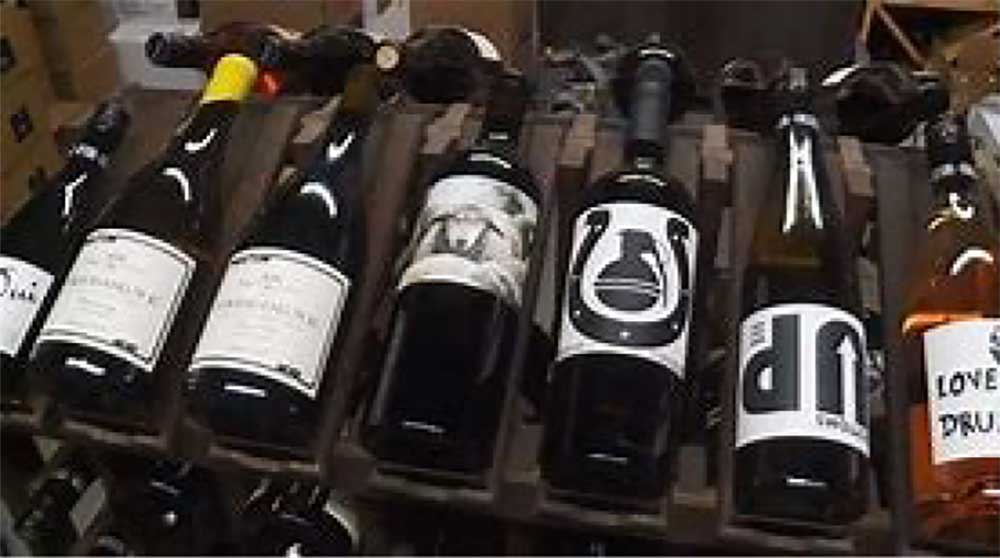
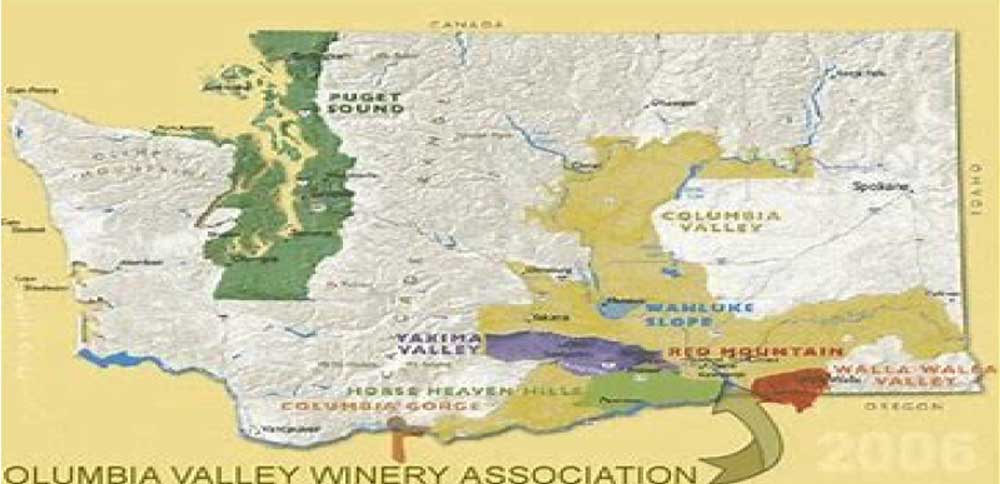
MAY 2023 WINES
-
Passionate Wines Montesco Piefranc Cabernet Franc
-
Bodegas Juan Gil Bluegray Red Blend Priorat
-
Jean-Paul Brun Domaine des Terres Dorées Fleurie
-
Black Star Farms Arcturos Gamay Noir
-
Remo Farina Valpolicella Ripasso Classico Superiore
-
Quarisa Wines ‘Mrs. Q’ Cabernet Sauvignon
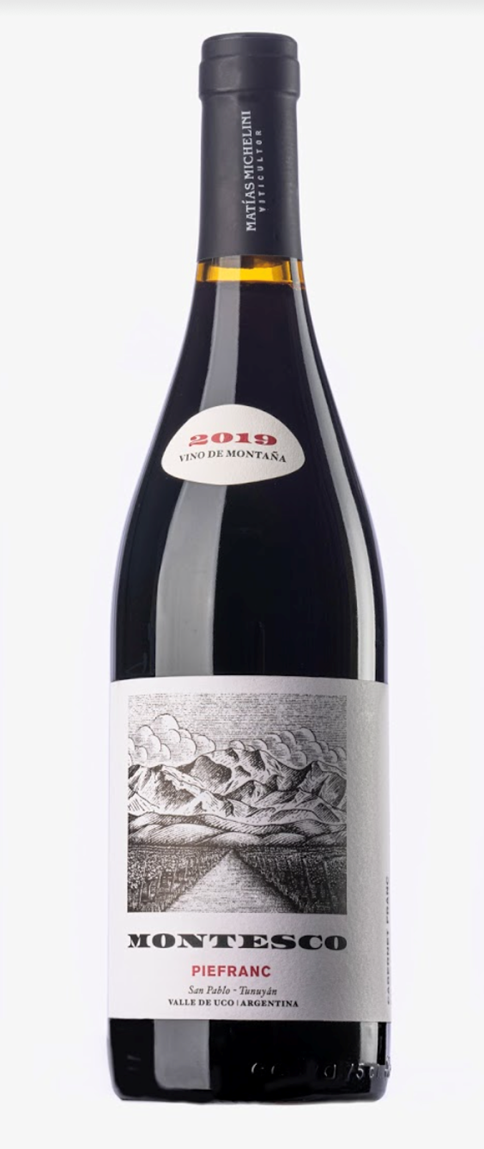
Passionate Wines Montesco Piefranc Cabernet Franc
2020 | $21.99
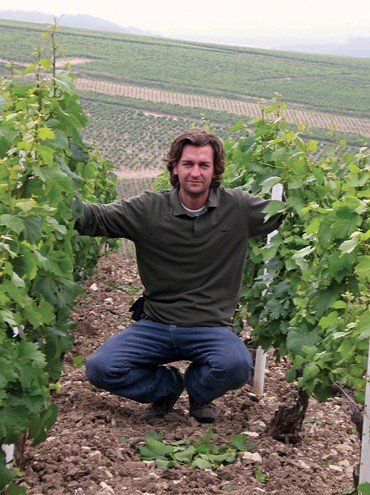
DESCRIPTION
Brazos Wine Imports is owned and operated by Brian Ravitsky and Jon Chaplin. They landed their first container of wine in the United States in 2009. Throughout their careers they have worked in every facet of the wine business ranging from Food & Beverage, Retail, Production, Distribution and Supply. They have completed multiple wine-study certifications and are painstakingly enthusiastic about food and wine. They are humbled to represent a focused portfolio from 30 different growers consisting of 13 different families located in some of the best sub-regions of Argentina and Chile.They focus on artisan, single vineyard, small production, estate grown, environmentally friendly wines. The wines they represent share old world, terroir-centric styles which they believe are unique and rare qualities to find in South America.
Passionate Wines is the brainchild of Matias Michelini. He is the winemaker, agronomist, and Grand Poobah of his winery. He is one of the growers for Brazos Wine Imports. Matias strives to make experimental wines that express terroir. These wines are low production and drawn from multiple inspirations, regions, and styles. The Via Revolucionaria wines are single vineyard, unconventional wines, fermented with native yeast. He produces a skin macerated Torrontes “Brutal,” an unfiltered Semillon “Hulk,” and a carbonic macerated and fermented Bonarda “Pura.” The Montesco wines are small production wines that focus on place and varietals. Matias continues to experiment with other cuvees with the mantra of producing either atypical varietals or classic varietals in non-traditional methods.
Passionate Wines Montesco Piefranc Cabernet Franc 2020
Montesco is the label from Michelini for the wines he makes from grapes grown high up in vineyards in Tunuyan and Tupungato. These are some of the highest altitude vineyards he sources from, incredibly old, and subject to extremely cold weather. The wines are made at his winery, Passionate Wines, in Tupungato, Argentina following his hands-off approach, from native yeasts and with minimal intervention and minimal sulfur levels. The resulting wines are admirable, unique, incredibly elegant, and always high-toned.
This wine is 100% Cabernet Franc grape from a single vineyard planted in alluvial and calcareous soils. It goes through maceration and fermentation in twenty days with native yeast and then spends eight months in a concrete vat. There was only 650 cases produced of this vintage.
TASTING NOTES
NOSE: Aromas include tobacco, raspberry, bell pepper, cassis, and violets.
PALATE: Bold, ripe blackberry fruit, with hints of meatiness and a sprinkling of that signature sandalwood and pepper - this is cabernet franc with the volume turned all the way up.
PAIRING: Beef, lamb, pork, game, poultry, vegetarian, and goat cheese.
WINERY WEBSITE: Passionate Wines
Valle de Tupungato I.G., Valle de Uco G.I., Mendoza, Argentina


Bodegas Juan Gil Bluegray Red Blend Priorat
2021 | $21.99
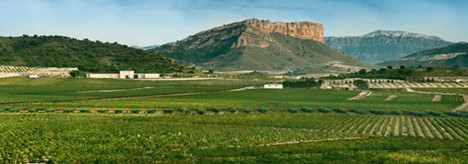
DESCRIPTION
Bodegas Juan Gil has become a Spanish wine powerhouse under the guidance of the family's fourth generation. Founded in 1916 by Juan Gil Jiménez, this is the Gil Family's first winery, created with the goal of highlighting the quality of the native Monastrell grape. Over 104 years, the winery has been consolidated and improved, applying technological advancements to the traditional knowledge passed down through the years.
The appellation of Jumilla, located about sixty miles inland from the southern Mediterranean coast in Murcia, is known for Monastrell (aka Mourvèdre), with over 80% of vineyards planted with it. Many of their vineyard’s average in age between 40 and 100 years with exceptionally low yields. The continental climate is extreme here: summers are dry and hot with intense sun and winters are long and cold. The vineyards are between 2,000 and 2,800 feet above sea level, planted on sandy and rocky limestone soils that are very poor in nutrients, but have a great capacity to hold what little rain does fall. Monastrell is a thick-skin grape that thrives in the harsh conditions of this climate and terrain, leading to wines with great structure and intense color and aromas.
The unique combination of altitude, soil and climate makes Organic farming quite typical in Jumilla. All the Gil Family's estate Monastrell vineyards are dry-farmed without the use of pesticides or herbicides, the winery is entirely solar powered and “Zero-Waste” (by product is composted, water recycled). Organic Farming Certification of the vineyards starting with 2018 vintage of Silver Label.
Their winemaking roots go back over a century, Gil Family Estates comprises eight wineries spread throughout seven D.O.'s in Spain and are famous around the world for bold flavors, lavish texture, and alluring spice.
Bodegas Juan Gil Bluegray Red Blend Priorat 2021
Born on the high-lying terraces of blue slate and quartz soils known as llicorella [yik-o-ral-ya], among pine and olive trees. A very inhospitable location, everything here must be done by hand and the vines have very low yields due to age. It is composed of 40% Garnacha, 30% Cariñena, 20% Syrah and 10% Merlot. The grapes are hand-picked and fermented separately in small barrels for 10 days at low temperatures and then aged separately in French oak barrels for 6 months and finally blended in the desired proportion.
TASTING NOTES
NOSE: Aromas of blackberries and cherries with delicate notes of nutmeg and star anise.
PALATE: The wine is very elegant, has well-integrated tannins, dried Mediterranean herbs, such as thyme, and a lingering finish.
PAIRING: This is a delicious wine with grilled and roasted red meat, game, cured meats, aged cheeses, rice and pasta with flavored sauces, savory winter dishes.
FUN FACTS: “Dark purple. Smoke-accented aromas of cherry, cassis, licorice, and violet are lifted by a peppery quality. Juicy, sappy, and well-concentrated, showing very good density to black currant, bitter cherry, and dark chocolate flavors. Finishes long and spicy, with firm minerality and youthful tannic grip.” Drink: 2023 – 2029.
-Vinous Magazine 92 Points
WINERY WEBSITE: Gil Family Estates
D.O.Q. Priorat, Spain
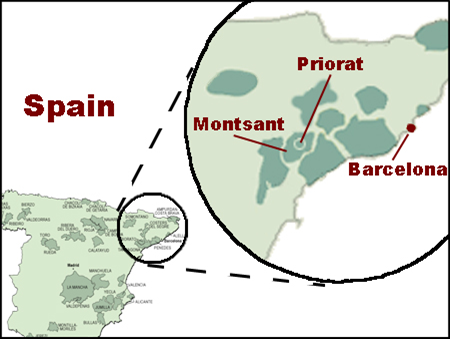

Jean-Paul Brun Domaine des Terres Dorées Fleurie
2020 | $25.99
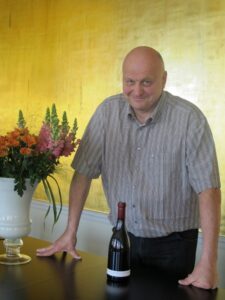
DESCRIPTION
Jean-Paul Brun started Terres Dorées in 1979 with a mere four hectares of vines.Brun is in Charnay, a village in Southern Beaujolais just north of Lyon, in a beautiful area known as the "Terres Dorées" or Region of Golden Stones in France. He is the owner and winemaker at this 60+ hectare family estate and has attracted the attention of the French and American press for the wonderfully fruity and delicate wines he produces.
Brun wants to make "old-style" Beaujolais and his vinification differs from the prevailing practices in the region. He believes that the charm of Gamay's fruit is best expressed by the grapes' indigenous yeasts, rather than by adding industrial yeast. Filtration is also minimal so that the wine keeps its original fruit and aromas.
Brun’s wines are not ‘blockbusters’ in the sense of ‘big.’ The emphasis is not on weight, but on fruit: Beaujolais as it once was and as it should be.
“Proprietor Brun is a believer in using only the vineyard’s wild yeast, rather than the synthetic yeasts used by most other producers. His beautiful wines are favorites among purists.”- International Wine Critic Robert Parker
In the mid 2000's, Jean-Paul set out to conquer Beaujolais' crus (Premium wine growing areas.). He currently owns land and produces from most of it, including the most recent addition of single vineyard cuvées. All told, he now produces well over 20 different wines from over 60 hectares of vines and shows no sign of slowing down.
Jean Paul Brun Terres Dorées Fleurie 2020
This wine is 100% Gamay grapes. Jean-Paul farms six hectares in Fleurie, all of it in the celebrated lieu-dit of Grille Midi, a south-facing amphitheater of vines on poor, sandy, decomposed-granite soils over hard granite rock. This site yields wines of great concentration, power, and longevity. There are two Terres Dorées bottlings from this vineyard: a straight Fleurie and a "Grille Midi". The key differences are vine age and the aging of the wines. The Fleurie is from the younger vines, which are around 40 years old, while the Grille Midi vines are 65 years and up. The wines are vinified the same way, as are all Jean-Paul's wines: the hand-harvested bunches are destemmed and fermented with native yeasts and without sulfur in concrete tanks.
TASTING NOTES
NOSE: Expect to smell fresh cut violets, iris and peony flowers wrapped in cherry, raspberry, and plum with subtle background notes of potting soil.
PALATE: On the palate, the wines are light with high acidity and tart flavors of red fruits along with a subtle bitter note on the finish.
PAIRING: The amazing thing about Gamay is that because of the high natural acidity paired with low tannin, the wine pairs shockingly well with a very wide array of foods. It is hard to go wrong with Gamay and food.
FUN FACTS: The raspberry fruit leaps out of this joyful Fleurie, which is elegant, juicy, crisp, and dry. A very bright wet-stone finish that pulls you back for more. Very good aging potential. Drink or hold. -James Suckling 93 Points
Gamay (“Gam-may” aka Gamay Noir) is a light-bodied red wine that is similar in taste to Pinot Noir. In fact, this variety is a cousin of Pinot Noir, and it grows primarily next to Burgundy, France (Pinot motherland) in a region called Beaujolais.
One cannot talk about Gamay without mentioning Beaujolais, France which produces 75% of the world’s Gamay wine.
WINERY WEBSITE: Terres Dorées | Bowler Wine
Beaujolais, Fleurie A.O.C., France
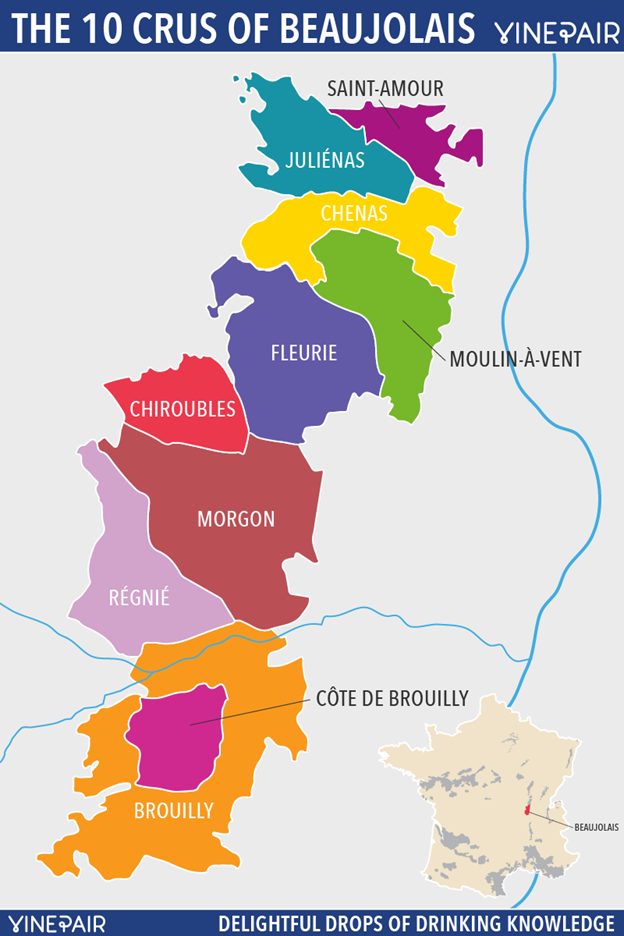

Black Star Farms Arcturos Gamay Noir
2019 | $19.99

DESCRIPTION
Founded in 1998, Black Star Farms has become a true one-of-a-kind destination nestled among the scenic rolling hills of the Leelanau Peninsula. The internationally acclaimed wines, luxurious Inn, decadent wine-paired culinary events, and unparalleled hospitality have become a unique way for wine lovers to retreat to the heart of Northern Michigan Wine Country.
Today the estate features a hillside vineyard that welcomes you upon arrival, a luxury Inn, unique event venues, an award-winning winery and tasting room, a distillery, a farm-to-table café, an equestrian facility, and hiking trails.
In 2007 Black Star Farms Old Mission opened in what used to be the popular Underwood Farms. It now houses a state-of-the-art wine processing/distilling facility and cozy tasting room surrounded by views of vineyards, orchards, and Grand Traverse Bay. The Wineries at Black Star Farms have achieved state, national, and international awards for their exceptional wines and spirits.
Our region is fast becoming recognized for producing fine wines. The “lake effect” climate enables the growth of classic vinifera grape varieties such as Chardonnay, Riesling, Cabernet Franc, and Pinot Noir. Black Star Farms’ varietal wines are regionally expressive and of high character. Their fruit is sourced from both the proprietor’s vineyards and the local grower partners on Leelanau and Old Mission Peninsulas. This diversity allows them to obtain consistent quality across vintages. Their wines reflect this quality, from the premium Arcturos label to their sparkling and fruit wines and represent the best efforts of their skilled winemaking team.
Black Star Farms Arcturos Gamay Noir 2019
Black Star Farms is located on the same 45th Parallel that runs through some of the great wine regions of the world. This is the third vintage of Gamay Noir. Gamay is the principal grape in Beaujolais, France. It drinks very much like Pinot Noir, and Pinot Noir is excellent with an extensive array of food. Proper cellaring will reward the patient in ten-plus years.
The grapes for this wine come from Leelanau Summit Vineyard in the Leelanau Peninsula Appellation. It is made with 100% Gamay Noir grapes and only 326 cases were produced of this vintage.
TASTING NOTES
NOSE: This medium/light-bodied wine has aromas of fresh-cut violets.
PALATE: Tart red fruit notes on the palate with subtle earthiness on the finish.
PAIRING: Gamay Noir is a very versatile red wine and a wonderful addition to meals. The recommendations include grilled meats such as pork or lamb, hanger steak with chimichurri, grilled salmon with Dijon glaze, or Cajun shrimp and grits.
Gamay wines match well with lighter meat dishes, cured meats, chicken, pork, and salads (so… basically everything!) They can also pair well with spicy foods and most cheese types. Gamay Noir produces light-bodied red wines with good acidity and low tannin.
WINERY WEBSITE:
#1 RATED Michigan Wineries, Black Star Farms Traverse City
Leelanau Peninsula A.V.A., Michigan
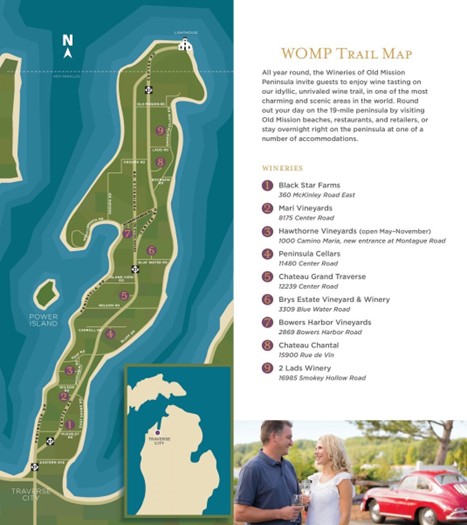

Remo Farina Valpolicella Ripasso Classico Superiore
2020 | $18.99 
DESCRIPTION
Tradition, commitment, and time-honored relationships, forged over almost two centuries of artistry, are the pillars of success at Farina Wines. Located in the heart of Valpolicella Classica, the original historic region of Amarone and Ripasso winemaking in the Veneto, Farina is owned by Claudio and Elena Farina, two cousins who represent the third generation of this winemaking family, with the guidance of Sandro, Claudio's father.
The Farina winery is in San Pietro in Cariano the heart of Valpolicella Classica, the historical, original Valpolicella. Valpolicella Classica consists of 5 villages: San Pietro in Cariano, Sant'Ambrogio, Fumane, Negrar and Marano. The wines are made from grapes grown on forty-five hectares of selected vineyards of Valpolicella Classica, ten of which belong to the Farina family and thirty-five that belong to historic, trusted "contributors" who have worked with Farina for years and are dedicated to growing only the best quality grapes.
Farina has two historic "Cru" vineyard sites: Montefante and Montecorna. The Montefante vineyard with its tuffaceous, clayey, and calcareous soil and excellent hilly exposure, is an ideal site for the Corvina grape used to make Farina's Amarone Montefante. The other cru is the Montecorna vineyard, located on Mount Masua, characterized by an extraordinary calcareous soil, ideally suited to produce grapes dedicated to Farina's Valpolicella Ripasso Montecorna.
When "making wine" becomes a distinctive trait of your identity, a piece of DNA that is handed down from generation to generation, a nod to those who paved the way to a company driven by passion and commitment, experience, curiosity, and research is a given. The "Remo Farina" line is dedicated to Elena Farina’s father and has come to represent the company’s flagship wines IGT and DOCG wines. Each wine is a maximum expression of quality, uniqueness, and winemaking philosophy.Farina's Valpolicella and Amarone wines are among the best-priced quality wines from this region.
Remo Farina Valpolicella Ripasso Classico Superiore 2020
The Farina family plants Corvina, Corvinone, Dindarella, Garganega, Molinara and Rondinella grapes on their 110 acres. This wine is made with 50% Corvina, 15% Corvinone, 20% Rondinella, 5% Molinara, 10% Oseleta grapes by the winemaking team of Luigi Andreoli and Andrea Zerman. The grapes are hand harvested from the hills of San Pietro in Cariano and Sant’Ambrogio di Valpolicella, pressed and de-stemmed immediately after harvesting. The first fermentation takes place in autumn, after the harvest. The wine is fermented, macerated, and receives two pump-overs per day following the first racking. At the beginning of spring, it is then re- fermented (“ripassato”) on the Amarone grape marc still soaked in wine. This process gives the wine greater structure, personality, aromas, and color. Then, it is aged in 100% Slavonian oak barrels followed by time in the bottle before release.
TASTING NOTES
NOSE: Intense on the nose, with aromas of pepper, leather, cherry and plum jam, licorice, and ginger.
PALATE: It is well structured, vigorous, and harmonious.
PAIRING: Excellent with a variety of aged meats and mature cheeses.
WINERY WEBSITE:
Farina Wines
Valpolicella Ripasso Superiore D.O.C., Veneto, Italy


Quarisa Wines ‘Mrs. Q’ Cabernet Sauvignon
2016 | $16.99

DESCRIPTION
John and Josephine Quarisa live by the belief that “Passion is Everything.”
Their passion extends far beyond the boundaries of the wine industry, into their home, their family, their hobbies, heritage and through the simplest things associated with everyday life. Laughter and fun are intrinsically mixed with hard work and good times.
This life-long, energetic partnership started at school when John and Josephine became high-school sweethearts. Over the years they have grown and developed and are still passionately working together, laughing, and loving every step of the way.
On completing his Wine Science degree John has continuously expanded his winemaking experience and has made wines for some of Australia’s largest and most well-known brands.
Casella Wines US phenomenon “Yellow-Tail,” to the multi-award-winning McWilliams Wines Hanwood Chardonnay, John has developed a reputation as a committed, quality winemaker.
John knows what it takes to make a wine that the world will love and how important it is to make a flawless wine that is recognized by not only the critical wine show circuit but the consumer as well. John’s career has included the instrumental development of Nugan Estate’s successful export strategy in his role as Chief Winemaker, forming the unique style of McWilliams Wines botrytis through the late 80s and early 90s and pursuing ultra-premium winemaking excellence and recognition at Casella Wines.
As a winemaker for over 30 years, John’s winemaking has been awarded some of Australia’s greatest accolades including both the Jimmy Watson and Stodart Trophies. An International and Australian Wine Show Judge, John’s experience and passion drove him to develop a range of wines that truly reflected what he loved in great wines; down to earth, full of character, and approachable are attributes that are both characteristic of the winemaking style and the winemaker himself.
In establishing their range of wines, the Quarisas have drawn on their greatest passions in life; their children, their family, heritage, and John, himself, the fun-loving winemaker.
Quarisa Wines ‘Mrs. Q’ Cabernet Sauvignon 2016
The grapes were picked in the cool of the night to retain fresh, elegant fruit flavors. A combination of rotary and "headed down" open fermenters were used over 7 to 9 days in the fermentation process.This portion completed its fermentation in new and old oak barrels. Once dry and blended, the wine remained in new and old French and American oak barrels for a I6 months.
The Coonawarra wine region is a wine region centered in the town of Coonawarra in the Limestone Coast zone of South Australia. It is known for the Cabernet Sauvignon wines produced on its "terra rossa" soil.
TASTING NOTES
NOSE: Aromas of intense cool climate cassis fruit and integrated spicy oak.
PALATE: Complex in cassis and cherry flavors with a long finish.
PAIRING: Serve with red wine glazed lamb and chargrilled capsicum and eggplant. Cheese platter and nuts. This wine has the flavor, structure, and balance to enjoy now or offers added satisfaction from further cellaring.
FUN FACTS: Halliday Wine Championship- 90 Points
WINERY WEBSITE: Quarisa Wines
Limestone Coast, Australia
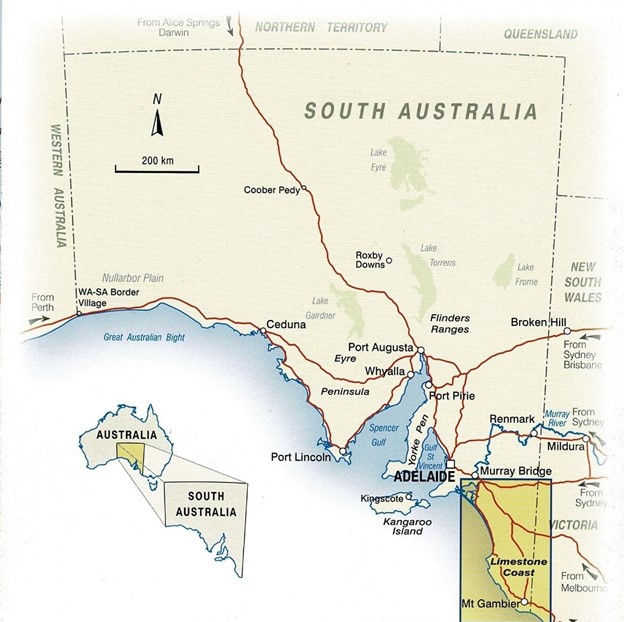
APRIL 2023 WINES
FEBRUARY 2023 WINES
-
PENFOLDS MAX'S CABERNET SAUVIGNON
-
BLEASDALE BREMERVIEW SHIRAZ
-
BODEGAS JUAN GIL RED BLEND
-
TENUTI SAN LEONARDO TERRE DI SAN LEONARDO
-
PAUL O'BRIEN OREGON TERRITORY PINOT NOIR
-
TIKVES ALEXANDRIA CUVEE

PENFOLDS MAX'S CABERNET SAUVIGNON
Cabernet Sauvignon | 2018 | $22.99
DESCRIPTION
Penfolds is an Australian wine producer that was founded in Adelaide in 1844 by Christopher Rawson Penfold, an English physician who emigrated to Australia, and his wife Mary Penfold. It is one of Australia's oldest wineries and is currently part of Treasury Wine Estates. The chief winemaker since 2002 has been Peter Gago.
Penfolds Max’s Cabernet Sauvignon is a tribute to former Chief Winemaker Max Schubert 1948- 1975, a legend in Penfolds history. Max’s constant pursuit of excellence paved the way for those who followed in his footsteps and allowed the status and heritage of Penfolds to grow. Max’s cabernet sauvignon displays the Penfolds ‘stamp’ inspired by Max Schubert.
Success of Penfold’s has been driven by the generations of visionaries and innovators. Since the beginning in 1844 to today, the merging of science, art, and innovation has driven Penfold’s to become one of Australia’s most famed and respected winemakers.
Penfolds Max’s Cabernet Sauvignon 2018
Max’s cabernet sauvignon is 100% cabernet grapes from southern Australia. Above-average winter and spring rainfall offered the vines across South Australia healthy soil moisture profiles for the growing season. Cool days and cooler nights slowed vine growth in early spring with temperatures warming in October. Late flowering and veraison delayed harvest by a few weeks. Weather conditions during ripening were generally dry with conditions favoring fully ripened grapes with well-developed colors and flavors.
TASTING NOTES
NOSE: The hallmarks of classic cabernet sauvignon are present and accounted for. First impressions are reminiscent of a stroll through a garden. Earthy, leafy notes prevail with dried native mint adding a lovely herbal note. Further investigation reveals cocoa powder, red currants and blood orange. Underlying cedar notes and cherry wood add further oak derived intrigue.
PALATE: An abundance of delightful primary fruit characters with blueberries, strawberries and pomegranates competing for attention. French and American oak maturation characters add a pleasing creaminess and weight to the palate with a distinctive hazelnut signature. Firm tannins with length and drive are supported by a seam of refreshing acidity.
PAIRING: Aussie cabs are a good match with simply prepared beef, lamb, and game. All good choices would be braised lamb shank, grilled steaks, and roasted prime rib. For cheeses: gorgonzola, parmesan, aged dry jack and blue cheeses that are not too salty.
FUN FACTS: Cabernet sauvignon holds a long heritage in Australia, in fact Penfold’s own block 42 in the Barossa Valley is thought to be the oldest continuously producing cabernet sauvignon vines in the world.

Bleasdale Bremerview Shiraz
Shiraz | 2019 | $19.99
DESCRIPTION
Bleasdale Vineyards is Langhorne Creek's founding winery. Established in 1850 by English migrant Frank Potts arrived in South Australia on HMS Buffalo in 1836, Bleasdale remains one of Australia's oldest wineries.
Bleasdale's source vineyards are situated on the floodplains of the Bremer River in Langhorne Creek, benefiting from the cooling breezes across Lake Alexandrina, and the cool slopes of the Adelaide Hills.
When Frank Potts established Bleasdale on the Langhorne Creek floodplain in 1850, he built a system of locks and weirs to capture and use floodwaters from the Bremer River to irrigate his vines. Many of Langhorne Creek’s vineyards, including Bleasdale’s Bremerview vineyard, still rely on his original flood irrigation system that comes into operation when the river naturally overflows to the vineyards planted along its banks.
Frank Potts liked building things – a home, a workshop, a winery, water pumps, floodgates, vats, a lever press, and a dynasty. When he added more land to his original holding, the vineyard area expanded and so the winery, and the family, grew.
In his later years, Frank handed over the daily workings of the vineyards and winery to three of his sons and went back to boat building.
His sons and grandsons operated and built up the winery, and even today the fourth and fifth generation of the Potts family are still involved in the winemaking and running of the winery. Their property, much of which enjoys conservation status, offers a fascinating insight into the history of Australia’s early settlers.
Bleasdale Bremerview Shiraz 2019
Bremerview Shiraz is 99% shiraz and 1% grenache. With nutrient rich soils, a moderate climate with refreshing cool breezes, Bleasdale's Bremerview vineyard is a fantastic place to grow shiraz.
The cellars at Bleasdale are a national monument, constructed from red gumwood and limestone, and some of the original winemaking equipment is still occasionally used. Nevertheless, the emphasis here is on using modern technology to produce wines of consistently high quality. Until the 1990s much of the region’s fruit went into multi-regional blends and it was only when a group of long-term family growers – including Bleasdale – started promoting 100% Langhorne Creek wines that the region became recognized in its own right.
TASTING NOTES
NOSE: Lifted spice aromas and dark berry fruit.
PALATE: A true expression of Langhorne Creek Shiraz, this is a medium bodied wine showing intense lifted spice aromas and dark berry fruit. The palate is long and silky with fine tannins, offering juicy plum and blackberry fruits, with notes of clove and pepper.
PAIRING: Enjoy with your favorite BBQ meats.

Bodegas Juan Gil
Red blend | 2019 | $19.99
DESCRIPTION
The origins of the Juan Gil winery date back to 1916, when Juan Gil Jiménez began producing wine in the center of Jumilla, Spain. Later, the third generation of the Juan Gil family decided to consolidate the business and began to craft wines under the brand name Juan Gil in homage to the founder of the company. Today, the fourth generation of the family runs the winery with renewed passion. Using the latest technologies available on the market, the winery works hard to bring to the public a wide array of wines mostly made from Monastrell. Though this great red grape is indigenous to the southeast of Spain, in the English-speaking world it is better known by its French name, Mourvèdre.
Bodegas Juan Gil Red Blend 2019
Juan Gil red blend is a mix of 45% cabernet sauvignon, 45% monastrell and 10% syrah. It is aged for 12 months in French and American oak barrels. It hails from Jumilla, Spain which is in the north.
TASTING NOTES
NOSE: The bouquet is a mix of bright summer berries and wild cherries.
PALATE: This red blend is smooth and plush on the palate with notes of black and red fruit wrapped in chocolate, clove, nutmeg and espresso.
PAIRING: This wine would pair perfectly with hearty and meaty dishes like hamburgers, pizza, short ribs, veal, pork, lamb, sausage or game.


Tenuti San Leonardo Terre di San Leonardo
Red blend | 2016 | $18.99
DESCRIPTION
Tenuti San Leonardo’s history dates back 1500 years, with the return of prisoners from Trentino, who erected a chapel in honor of the patron saint of prisoners, Saint Leonard. Today, the ancient monastery hospice, which once gave shelter to the destitute, is now the cellar where the wines mature in barrels. Present owners the Guerrieri Gonzaga family have taken advantage of the terroir to create Bordeaux-inspired blended wines, under the guidance of master winemaker Carlo Ferrini and consultant winemaker Giacomo Tachis, considered to be a genuine maestro of Italian winemaking through his creation of some of Tuscany’s most influential wines since the 1970s. This talented pair ensures calculated aging 6 months in large format Slavonian oak, then 24 months in small French oak barrels and expert blending of each varietal, followed by a year of bottle aging. The results are consistently spectacular.
Tenuti San Leonardo Terre di San Leonardo 2016
San Leonardo is a blend of 50% cabernet sauvignon, 40% merlot and 10% carmenere. It is a product of spontaneous fermentation lasting between 15-18 days followed by maturation in concrete vats and French oak.
TASTING NOTES
NOSE: The aromas are delicate and soft with hints of wild rose, berries, cassis, and mulling spices.
PALATE: Terre offers bright intensity and lots of dark fruit with easy spice, fresh blackberry and subtle mineral tones.
PAIRING: This wine pairs beautifully with beef, lamb, veal, and grilled meats.


Paul O’Brien Oregon Territory Pinot Noir
Pinot Noir | 2017 | $19.99
DESCRIPTION
Oregon Territory was created by two winemakers who share a passion for fine wine, great food and a gracious life. Dyson Paul DeMara and Scott O’Brien Kelley met while working at Robert Mondavi Winery in the Napa Valley nearly 20 years ago. Since then they have traveled the world’s wine regions learning the old world traditions and sharing new world techniques. In 2013 the duo came together to start Paul O'Brien Winery, the Umpqua Valley’s first urban winery in the historic Hansen Chevrolet building in downtown Roseburg, Oregon. The duo chose their middle names to brand the winery as it speaks to their friendship and partnership. Oregon Territory captures the rich spirit and powerful nature that makes Oregon so special.
Oregon Territory was created out of the desire to share the pioneering spirit of Oregon Pinot Noir. A variety the experts said could not possibly ripen in Oregon, yet 50 years later the world now understands Oregon’s importance.
While the Willamette Valley and Pinot Noir are like a fairy tale match made in heaven, most of Oregon is in fact, a glorious source of Pinot noir. Claiming over half of its total area under vine, Pinot noir also thrives in Southern Oregon’s Umpqua and Rogue Valleys where sedimentary and volcanic soils dominate hillside vineyards and cool temperatures create the perfect environment for Pinot noir. Also, Oregon’s Columbia Gorge is becoming increasingly popular for Pinot noir production. What sets Oregon Pinot noir apart from the Pinot of other regions, both New and Old World, is its innate combination of grace with both power and restraint.
Paul O’Brien Oregon Territory Pinot Noir 2017
Oregon Territory is 100% Pinot Noir. It is hand-harvested and the grapes undergo vinification in open top concrete fermenters with 22% whole cluster. Then the wine ages 12 months in oak, with 25% in New French oak barrels.
TASTING NOTES
NOSE: Bright notes of cherry and red currant.
PALATE: Silky and elegant, fine tannins with mouthwatering acidity. Black cherry, crushed raspberries, and light notes of vanilla. Easy to drink and perfect by the glass.
PAIRING: Pair with mushroom risotto, bacon wrapped scallops over parsnip puree.
FUN FACTS:Wine Enthusiast 90 Points 2017 Vintage
James Suckling 91 Points 2016 Vintage
Wine Enthusiast 90 Points 2015 Vintage
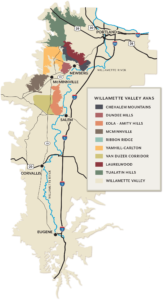

Tikves Alexandria Cuvee
RED BLEND | 2019 | $18.99
DESCRIPTION
Tikveš Winery was founded in 1885 in a region with centuries-old winemaking tradition, blessed with perfect natural conditions, warm and passionate people and a lively, authentic culture. We have always had a penchant to go beyond expectations, embrace innovation and conquer new markets. Over the years we acquired more prime land than any other winery in South Eastern Europe. We own the latest technology and employ some of the brightest and most experienced talent in the business, to ensure that the superior quality of our products is maintained at all times.
Our portfolio of fine wines stretches across several categories to fit every occasion, winning numerous highly-acclaimed international awards, year after year. Our mission is to create an opportunity for all wine lovers anywhere in the world, to be able to enrich any social occasion with the inimitable experience of Tikveš wines and share our passion for life.
Tikves Alexandria Cuvee 2019
The wine is a blend of 70% vranac, 20% merlot and 10% cabernet sauvignon. The average age of the vines is between 15-25 years. It is a dry red wine with intense ruby red color with a full-body and soft tannins.
TASTING NOTES
NOSE: It exhibits complex aromas of red and black fruits –cherries, plums, raspberries, and black currant, with notes of dried tobacco, smoke, black pepper and cinnamon.
PALATE: Alexandria Cuvee displays notes of blackcurrant, black plum, cedar and toast. It is round on the palate and has a long and spicy finish.
PAIRING: This blend will pair well with all Macedonian food, red meat, game, barbeque, and smoked meat.
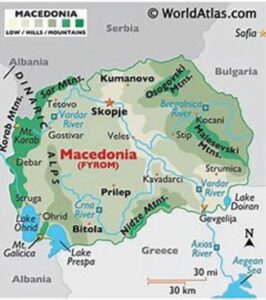
CONTACT HOLIDAY MARKET WINE DEPARTMENT



